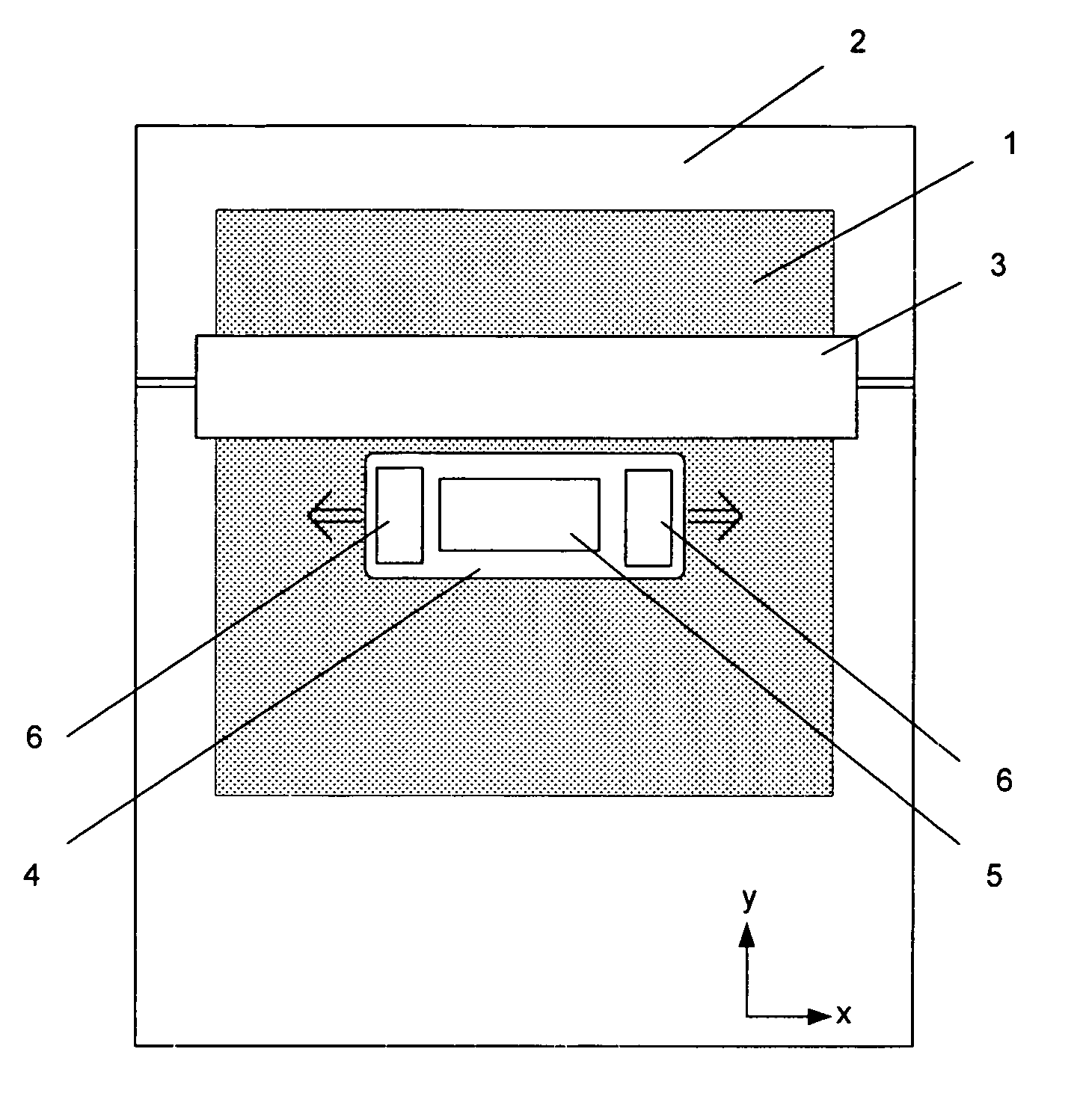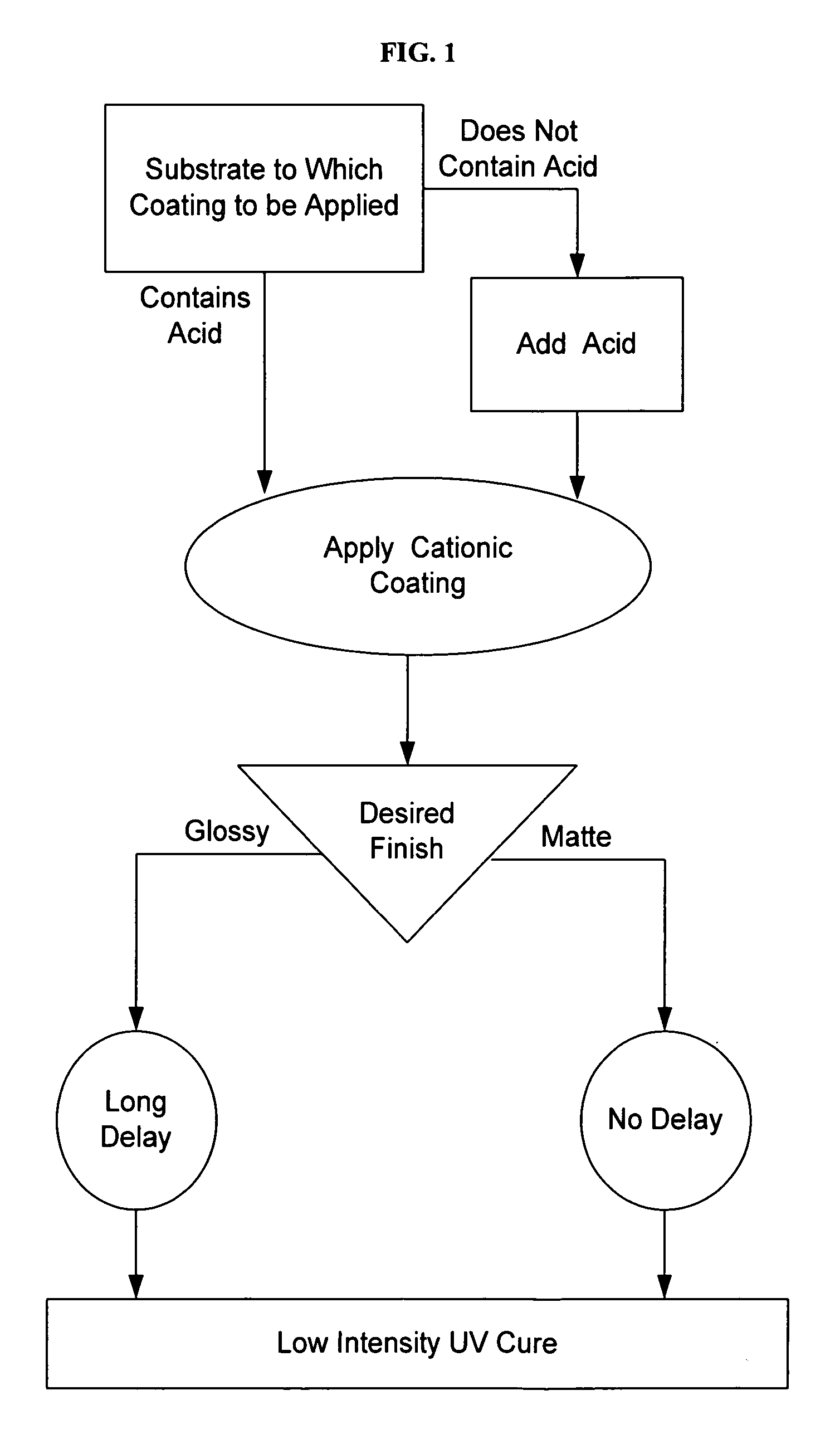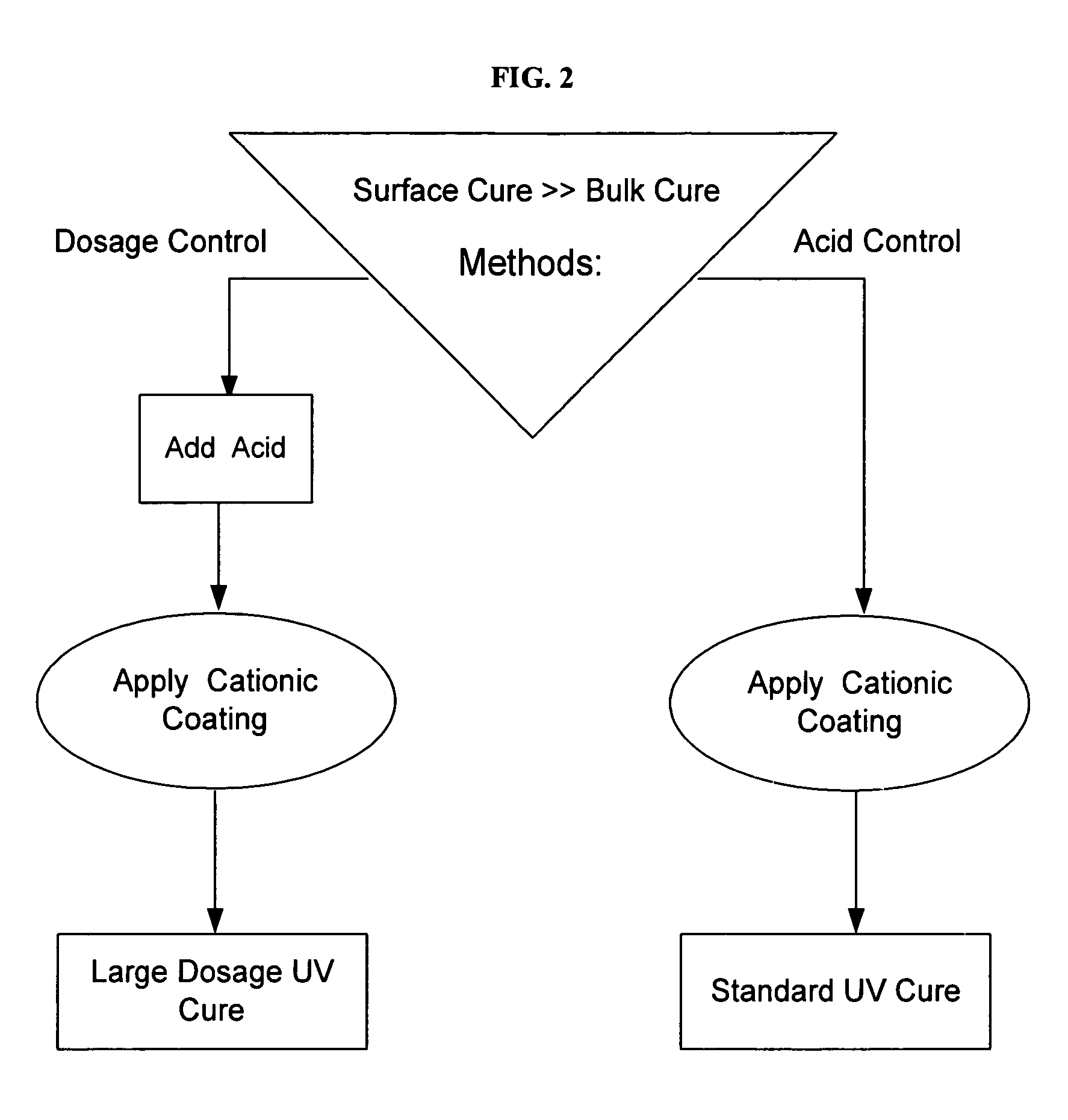Light cure of cationic ink on acidic substrates
a technology of acidic substrates and cationic coatings, applied in the field of coating technology, can solve the problems of limiting the use of heat-sensitive substrates, increasing the complexity and cost of processing a substrate, and undesirable use of such systems, and achieves the effect of higher flexibility
- Summary
- Abstract
- Description
- Claims
- Application Information
AI Technical Summary
Benefits of technology
Problems solved by technology
Method used
Image
Examples
example 1
[0242]Acid Coat 287-127 represents an example pretreatment which has been applied to a substrate, and light activated to release an acid, prior to applying a second coating of cationic coating composition (herein used in examples 3, 4, 5 and 6). The composition of acid coat 287-127 was: Isopropanol—50 grams; TMPO Oxetane—10 grams; Irgacure 250—2 grams.
example 2
Substrate Descriptions and Preparations
[0243]Substrate 1: Glass was cleaned with soapy water and allowed to dry. The 4 inch by 4 inch glass plaques were wiped with isopropanol and dried within 90 seconds + / −90 seconds before applying a coating.
[0244]Substrate 2: Same preparation as Substrate 1, followed by an acetic acid wipe (99.6% glacial acetic acid) and air dried.
[0245]Substrate 3: Same preparation as Substrate 1, followed by application of “Acid Coat” 287-127 (described in Example 1) drawn down with a #10 wire cater. The acid coat was activated prior to additional coatings being applied by exposing the acid coated glass to the 254 nm Lamp at a dosage equal to the dosage for the subsequently applied coating.
[0246]Substrate 4: Instachange IP (3M commercially available vinyl).
[0247]Substrate 5: Same preparation as Substrate 4, followed by an acetic acid wipe (99.6% glacial acetic acid) and air dried.
[0248]Substrate 6: Same preparation as Substrate 4, followed by application of “Ac...
example 3
Black 287-126 Cationic Composition
[0249]The coating contains the following ingredients: Cyracure UVR-6110 64.6 grams, TMPO (Trimethylol propane oxetane from Perstorp Specialty Chemicals AB Perstorp, Sweden) 16.2 grams, Black pigment 10C 909 (Black pigment 10C 909 from The Shepherd Color Company Cincinnati, Ohio USA) 5.0 grams, Irgacure 250 (Irgacure 250 was supplied by Ciba Specialty Chemicals Corp., Terrytown, N.Y., USA) 3.8 grams, Rapicure DVE-3 5.0 grams, Speedcure CPTX (Aceto Corporation Lake Success, N.Y.) 0.75 grams and Silwet 7604 (GE Silicones, Friendly, W.V.), 0.5 grams were assembled into a dark plastic container and protected from light. The ingredients were dispersed with an ULTRA-TURRAX T25 for fifteen minutes. After dispersing, 2.0 grams of Boltorn H2004 were added (Boltorn H2004 from Perstorp Specialty Chemicals AB Perstorp, Sweden).
[0250]To test cure, Example 3 was drawn down onto substrates as indicated and described in Example 2.
[0251]Where indicated, samples were ...
PUM
| Property | Measurement | Unit |
|---|---|---|
| wavelength | aaaaa | aaaaa |
| humidity | aaaaa | aaaaa |
| wavelength | aaaaa | aaaaa |
Abstract
Description
Claims
Application Information
 Login to View More
Login to View More - R&D
- Intellectual Property
- Life Sciences
- Materials
- Tech Scout
- Unparalleled Data Quality
- Higher Quality Content
- 60% Fewer Hallucinations
Browse by: Latest US Patents, China's latest patents, Technical Efficacy Thesaurus, Application Domain, Technology Topic, Popular Technical Reports.
© 2025 PatSnap. All rights reserved.Legal|Privacy policy|Modern Slavery Act Transparency Statement|Sitemap|About US| Contact US: help@patsnap.com



